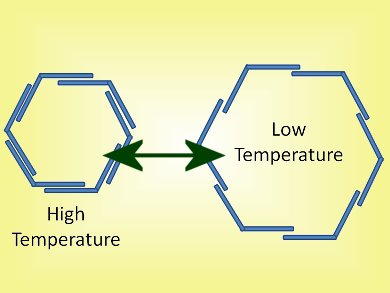Obtaining nanotubules able to respond to external stimuli and undergo dynamic changes, without breaking, is a major challenge. Zhegang Huang, Seoul National University, Korea, and colleagues, created thermo-responsive nanotubules. The scientists’ strategy is based on the self-assembly of macrocyclic units consisting of six bent-shaped aromatic molecules carrying at their apex water-soluble branched polymers.
In water, the macrocycles stack on top of each other and form tubular structures which expand when the temperature decreases and shrink when the temperature increases. This dynamic nature comes from the hydrocarbon pyridine located in the central core of the aromatic molecules. Hydrogen bonding interactions between pyridine and water maintain the nanotubules in an expanded state. Upon heating, the breakage of these interactions induces adjacent aromatic molecules, within the macrocycles, to slide over one another. As a result of this movement, the nanotubules’ diameter contracts. Since this process is reversible, the nanotubules return to an expanded state following cooling.
- Pulsating tubules from noncovalent macrocycles,
Z. Huang, S. K. Kang, M. Banno, T. Yamaguchi, D. Lee, C. Seok, E. Yashima, M. Lee,
Science 2012, 337 (6101), 1521–1526.
DOI: 10.1126/science.1224741



